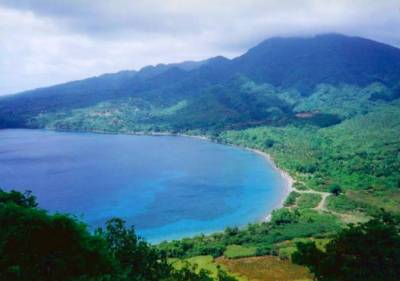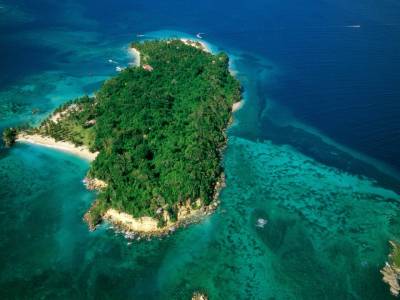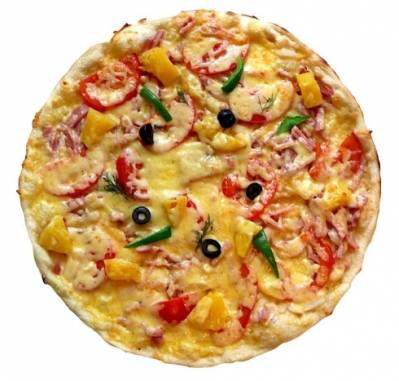Haiti
The Republic of Haiti, a country in the West Indies, occupies the western third of the island of Haiti (Hispaniola formerly) in the Greater Antilles. The rest of the island belongs to the Dominican Republic. The boundary between these states has a length of 309 km. The Republic of Haiti, including the offshore islands of rut and Cakes (formerly Tortuga), covers an area of 27.75 square meters. km. In the north Atlantic Ocean in the south - the Caribbean Sea on the west island of Haiti, Cuba, is separated from Windward Passage width of 80 km.
Currency:
Gurd, equal to 100 centimes. The country has officially adopted only the national currency, although U.S. dollars are actually almost universal circulation, especially in markets and in private institutions. Foreign exchange associated with some difficulty - at the airport in Port-au-Prince there is no exchange offices and banks. In the capital itself there are a lot of generating foreign currency exchange banks, but the conditions and the commission often change. A thriving black market allows the exchange money on the street in an acceptable rate, but often such an exchange is associated with risk of becoming a victim of fraud or robbery. Hotels often exchange money at completely unacceptable standards. Use of credit cards and travelers checks only possible in the capital, though Visa and MasterCard are accepted in most places, car rentals and boats, in good restaurants and hotels. Porter, guides and taxi drivers accept payment U.S. dollars, but often overstate the rate equivalent to 20-30%. Tipping in restaurants is 10%,
Haiti in bars and restaurants can restrict street 5%. Porter and porters at the airport and tipping at a rate of 1.5 gourdes. When parking the car in the city you can offer to look after them in your absence. It is advisable to take this service, be sure to ask the name of the "watchman", and paid five gourdes to return - otherwise, chances are good that the car will be specially damaged or stolen.
Visa:
Citizens of the former USSR have the right to enter the territory of Haiti in the presence of a six-month tourist visa by presenting a ticket with a specified date of departure from the country. The visa can be obtained from the Consular Section for a day in the presence of the passport, hotel reservation and a ticket with the date of return travel. A trip with the children officio invitation is difficult. Citizens of Argentina, Austria, Belgium, Canada, Denmark, Germany, Israel, Liechtenstein, Monaco, South Korea, Switzerland, UK and USA have the right to visa-free entry. Departing from the country's tax will be charged $ 25, plus 10 gourdes out by air.
Customs:
The import of drugs, poisons and explosives, firearms, some food products. The export without special permission from exotic birds and animals, objects and items of historical and artistic value. The import and export of domestic and foreign currency restrictions are absent.
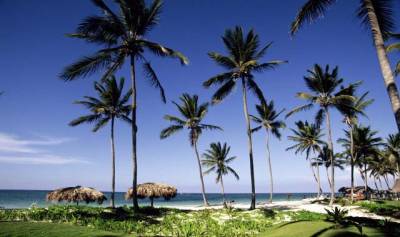
Cuisine:
The traditional cuisine of Haiti - a combination of European, African and Caribbean traditions, using local produce. Feature cuisine of Haiti - a lot of hot peppers. Highly prized fish. It boiled, fried, stewed, marinated in lemon juice and then grilled on branches of laurel and fennel stalks. Typical dishes - La Bandera (rice, meat, beans, vegetables and green fried plantains), San Kocho (cooked in broth, various meats and vegetables), fish with coconut, mango (puree of wild bananas, preparing for breakfast), Pinonate (dessert made from milk and coconuts). During meals drink water. As drinking is recommended to use mineral or purified water in bottles. The most common aperitif - rum and coca-cola or soda. In Haiti, at a premium turkey. Many dishes are served with bananas and sweet sweet potatoes, which can replace bread. Bananas are also often cooked with poultry and meat. Haitians are very fond of young corn, boiled in a fish broth. Of cassava (flour), they bake bread, "cassava". Also popular appetizer of smoked herring with avoca (pears type). At first glance, the contrast may seem strange, yet the result is magnificent. In Haitian cuisine often combines incongruous in terms of products of an alien.
The main attractions of the country are concentrated in Port-au-Prince, the National Museum, Archaeological Museum. The art center, N ATIONAL Palace, the Basilica of Notre-Dame, the pier, built by the French in 1780.
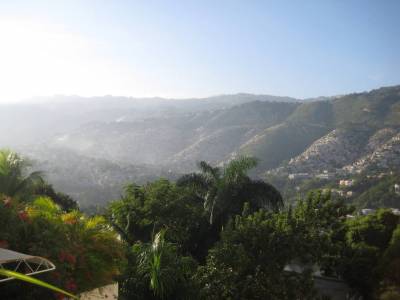
Currency:
Gurd, equal to 100 centimes. The country has officially adopted only the national currency, although U.S. dollars are actually almost universal circulation, especially in markets and in private institutions. Foreign exchange associated with some difficulty - at the airport in Port-au-Prince there is no exchange offices and banks. In the capital itself there are a lot of generating foreign currency exchange banks, but the conditions and the commission often change. A thriving black market allows the exchange money on the street in an acceptable rate, but often such an exchange is associated with risk of becoming a victim of fraud or robbery. Hotels often exchange money at completely unacceptable standards. Use of credit cards and travelers checks only possible in the capital, though Visa and MasterCard are accepted in most places, car rentals and boats, in good restaurants and hotels. Porter, guides and taxi drivers accept payment U.S. dollars, but often overstate the rate equivalent to 20-30%. Tipping in restaurants is 10%,
Haiti in bars and restaurants can restrict street 5%. Porter and porters at the airport and tipping at a rate of 1.5 gourdes. When parking the car in the city you can offer to look after them in your absence. It is advisable to take this service, be sure to ask the name of the "watchman", and paid five gourdes to return - otherwise, chances are good that the car will be specially damaged or stolen.
Citizens of the former USSR have the right to enter the territory of Haiti in the presence of a six-month tourist visa by presenting a ticket with a specified date of departure from the country. The visa can be obtained from the Consular Section for a day in the presence of the passport, hotel reservation and a ticket with the date of return travel. A trip with the children officio invitation is difficult. Citizens of Argentina, Austria, Belgium, Canada, Denmark, Germany, Israel, Liechtenstein, Monaco, South Korea, Switzerland, UK and USA have the right to visa-free entry. Departing from the country's tax will be charged $ 25, plus 10 gourdes out by air.
Customs:
The import of drugs, poisons and explosives, firearms, some food products. The export without special permission from exotic birds and animals, objects and items of historical and artistic value. The import and export of domestic and foreign currency restrictions are absent.

Cuisine:
The traditional cuisine of Haiti - a combination of European, African and Caribbean traditions, using local produce. Feature cuisine of Haiti - a lot of hot peppers. Highly prized fish. It boiled, fried, stewed, marinated in lemon juice and then grilled on branches of laurel and fennel stalks. Typical dishes - La Bandera (rice, meat, beans, vegetables and green fried plantains), San Kocho (cooked in broth, various meats and vegetables), fish with coconut, mango (puree of wild bananas, preparing for breakfast), Pinonate (dessert made from milk and coconuts). During meals drink water. As drinking is recommended to use mineral or purified water in bottles. The most common aperitif - rum and coca-cola or soda. In Haiti, at a premium turkey. Many dishes are served with bananas and sweet sweet potatoes, which can replace bread. Bananas are also often cooked with poultry and meat. Haitians are very fond of young corn, boiled in a fish broth. Of cassava (flour), they bake bread, "cassava". Also popular appetizer of smoked herring with avoca (pears type). At first glance, the contrast may seem strange, yet the result is magnificent. In Haitian cuisine often combines incongruous in terms of products of an alien.
The main attractions of the country are concentrated in Port-au-Prince, the National Museum, Archaeological Museum. The art center, N ATIONAL Palace, the Basilica of Notre-Dame, the pier, built by the French in 1780.

